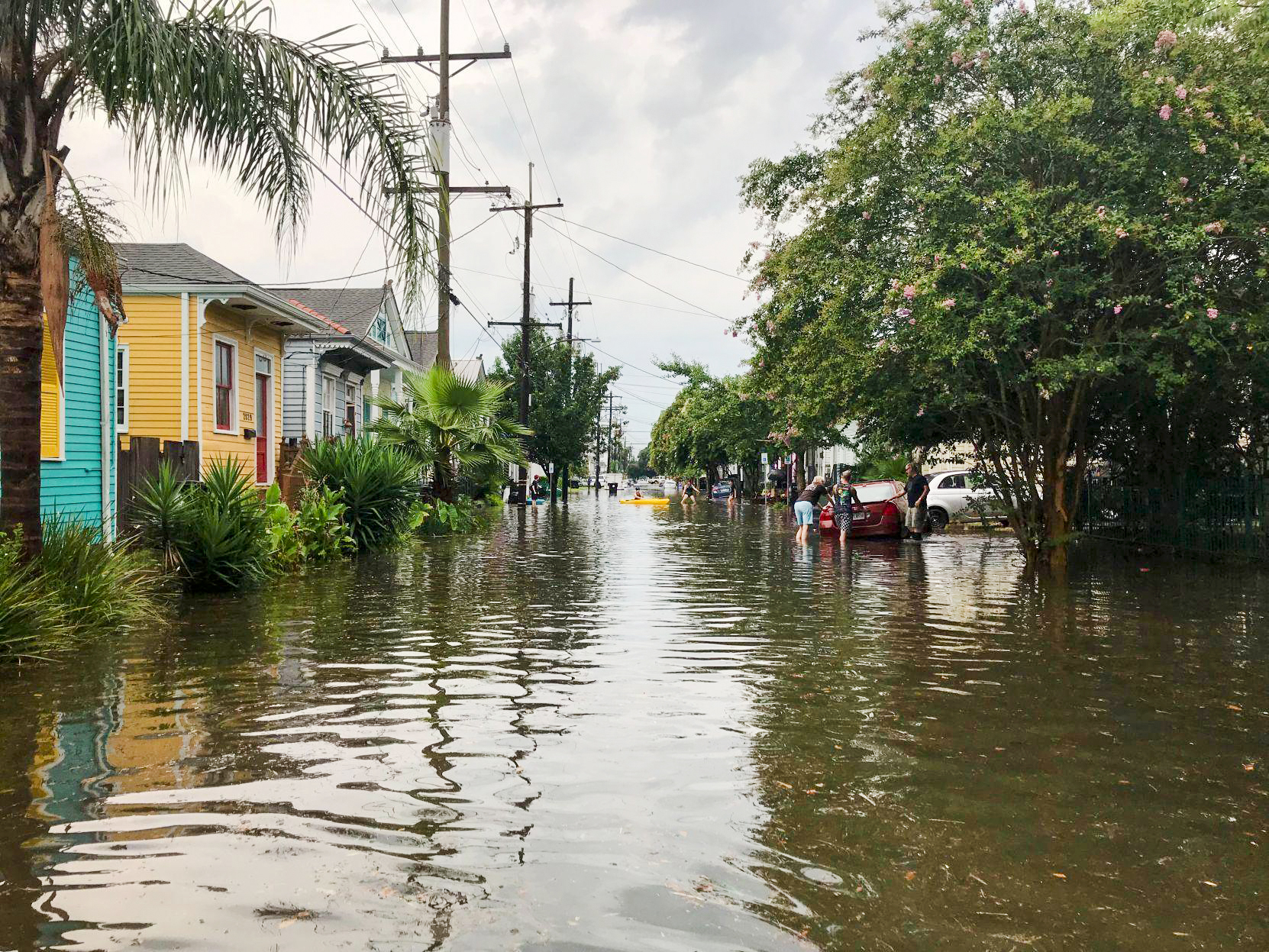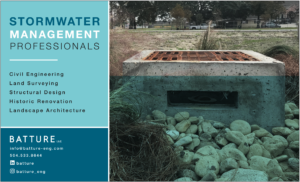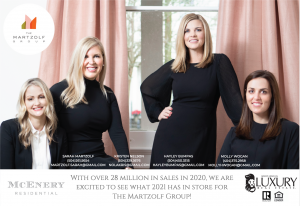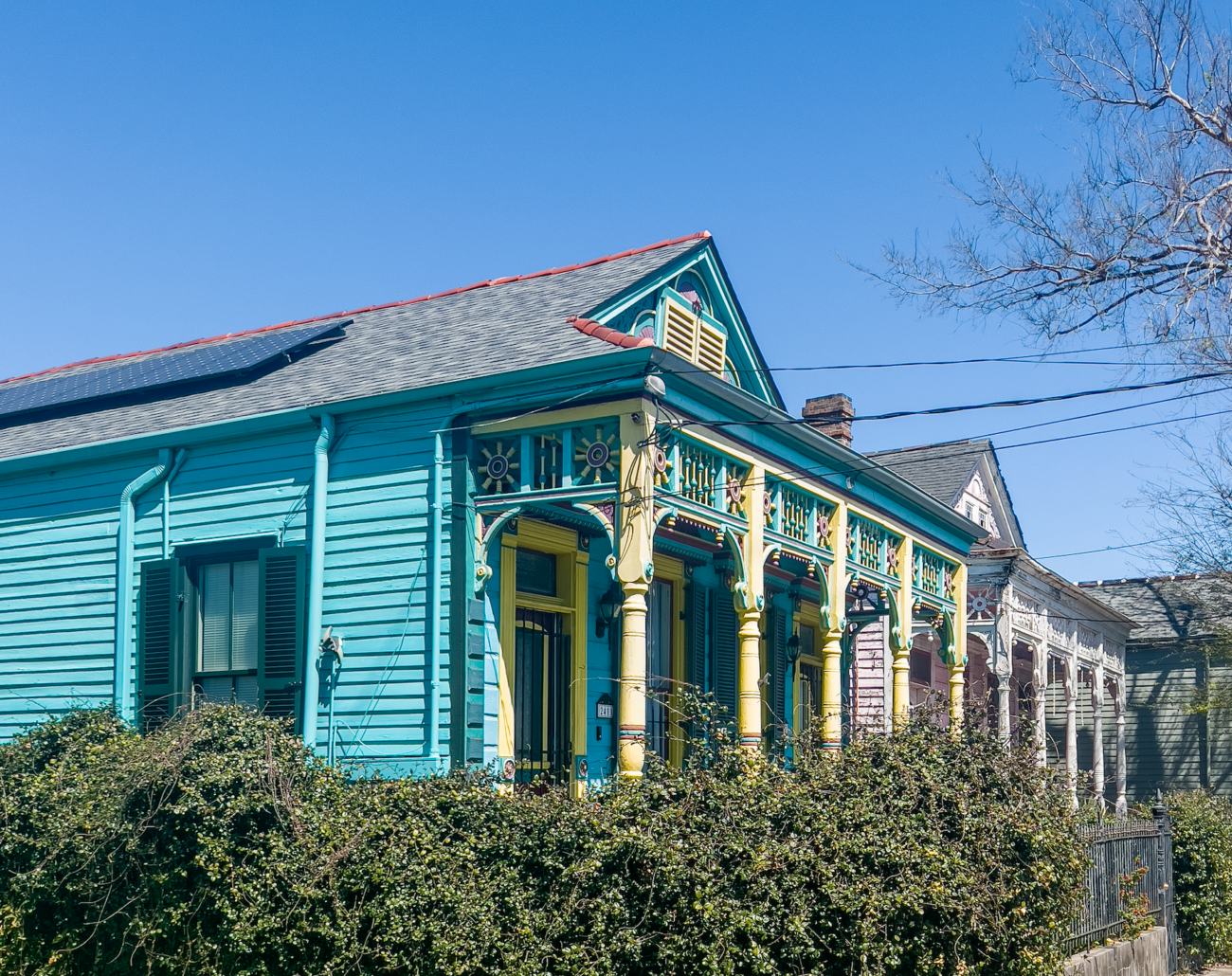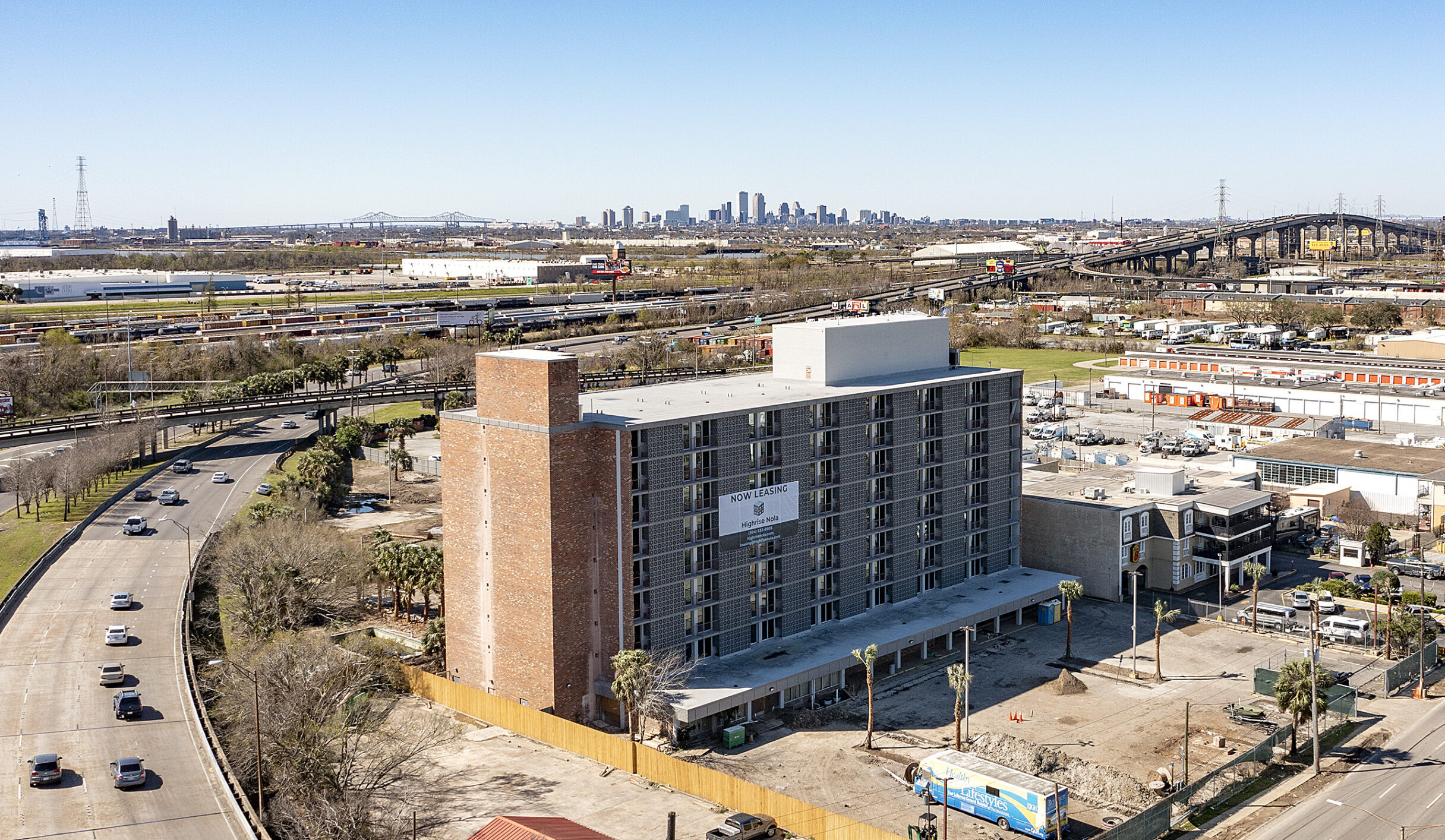This story appeared in the April issue of PRC’s Preservation in Print magazine. Interested in getting more preservation stories like this delivered to your door nine times a year? Become a member of the PRC for a subscription!
Header image: Heavy thunderstorms in July 2019 caused street flooding in several neighborhoods of New Orleans. Photo courtesy of The Times-Picayune|New Orleans Advocate.
After Hurricane Ida hit last year, Martin C. Pedersen, executive director of the Common Edge Collaborative, caught up with architect David Waggonner, principal of Waggonner & Ball Architecture and Environment, to discuss the storm’s destruction and the warnings it sent about the future of Louisiana — and the nation.
After Hurricane Katrina, Waggonner & Ball led a series of meetings for American and Dutch architects and urban planners, called the Dutch Dialogues. Those meetings explored ways to address flooding, subsidence and infrastructure problems through improving stormwater management. The outcome of those meetings was the Greater New Orleans Urban Water Plan. In this interview, Pedersen and Waggonner discuss the state of the Water Plan and resiliency of the city and the nation.
Advertisement
MCP: Hurricane Ida made landfall in Louisiana — at Port Fourchon specifically — at 11:55 a.m. on Aug. 29, 2021. Now that nearly eight months have passed since the storm, what should New Orleans be doing now?
DW: Well, where we should be is in a more robust implementation of the Water Plan, which followed from the Dutch Dialogues. The plan was finished in 2013. It was not mandated or sanctioned by anybody, but it was adopted in pieces by everybody. The city used it for a while, and they got the money for the HUD application for the Gentilly Resilience District (a network of new waterways, parks and community-centric redevelopment in one of New Orleans’ lowest-lying communities). The state of Louisiana used some of these ideas for the Louisiana SAFE program (a regional adaptation framework for six parishes over 50 years). But what we have now is a challenge to (fuller) implementation.
After the levees failed (following Hurricane Katrina), people said that we had a system in name only. I would argue that we still have a system in name only. You can’t have a complete flood defense system when you’re only thinking about the perimeter. You’ve got to think about the entirety of the land area. We act like there’s a line, and you’re either inside of it or outside of it, when in fact there’s an outside component, an inside component, an elevation component, and all those things have to be considered if you want to live in this dynamic environment. And the truth is, people would be happier living in this dynamic environment if it took advantage of bringing more water into it. The perversity of our environment is that when you fly into it, all you see is water. Then you come into the city and see no water. That’s inherently unsustainable. New Orleans is probably the only place below sea level in the world that tries to live without surface water.
MCP: The levees did hold during Hurricane Ida, that was definitely the good news. But you wonder how sustainable, as a city, New Orleans is, if storms like this come every summer.
DW: That is the question. The levees, however, weren’t severely tested by this storm. The run-up on the storm surge wasn’t that high. The number on the MRGO (Mississippi River Gulf Outlet) closure structure was 12, and it’s built for 27.
Advertisement
MCP: So, Ida wasn’t the big one in terms of storm surge?
DW: Apparently not, but it did test another component of resilience: the electrical system. We did a resiliency plan for Bridgeport, Conn., and one of our six layers was a microgrid that would allow them to keep functioning in the South End of Bridgeport. In New Orleans, the grid showed up as a real weakness. So how do you make that less vulnerable? Given the seasonality of these storms, we get severe heat afterwards, which is as dangerous as the wind and water. Remember the heat wave in Chicago that killed so many people a while back? Energy and cooling needs are dire everywhere.
MCP: The Northeast had more fatalities from flash flooding than Louisiana did from the hurricane. This isn’t an only-in-New Orleans problem.
DW: It is a global problem. (For Hurricane Ida), I evacuated to Humboldt, Calif., where we rented a place during the storm. I was at the farmer’s market one morning, talking to a farmer, who said, “This is the eighth year in a row that I’ve had to deal with smoke. And I don’t know how long I can take it.” That endgame mindset is what’s dangerous right now. Instead of saying, “Where are we? What can we do?” people are saying, “How do I get out of it?” And there’s probably nowhere you can go to get out of it. We’re not living in balance with the land, our climate, or with one another.
MCP: I feel like the resiliency piece, as it relates to New Orleans, is missing nature. What you’ve been talking about for 15 years: our relationship to nature.
DW: Yes. The worst response that New Orleans could make to this would be, the problem is the fallen trees, because our city is fundamentally uninhabitable without the urban canopy. The oak trees here were beat up, but they’ll recover. Nature is extremely durable, if we just give it a chance. The electrical grid, the physical wires, are a big issue. All of us are vulnerable because we’re living off these data systems that depend on electricity, and at some point, there’s going to be a bigger catastrophe. And we’re not going to be able to access all this data. Hell, we don’t even know our own children’s cell phone numbers anymore. We’re building a progressively more vulnerable society instead of a more durable one.
MCP: The urgency for New Orleans is particularly acute. It almost has to figure it out ahead of everybody else. It’s still the proverbial canary in the coal mine.
DW: Ultimately, the real question for New Orleans will be the erosion of population. That’s the challenge the city faces. It’s a big city, geographically. There’s a levee system that needs to be supported. One of the things the Water Plan was trying to do was make the case for reinvestment, so you could continue to support the levees that are fundamental to being able to then manage the internal water. The reinvestment is taxes. That’s the challenge we have now, because we’re so divided as a society, and people have weaponized language to a degree that you have to be cautious about how you say something and almost can’t speak simple truths. The city needs more people. Yes, we want to honor the local. But we need people and revenue to be able to support this place. We have expensive infrastructure. We live inside a huge levee system. It will never be a cheap city to operate. So, we have an extra cost that most places don’t have.
Advertisement
MCP: Let me push back on that and argue that maybe New Orleans is better positioned than cities like Houston or Miami, that can’t build levees. New Orleans has that component in place. It also possesses emotional resiliency. It’s missing the third leg of the stool, which is nature.
DW: Which is the one that we should be able to leverage, because it’s here. These trees are going to make it, at least until the salt water comes. Yes, we do have a levee system. It’s our great advantage. But we’ve got to maintain it. The Miami condition is more difficult. And it’s true: There are people living in dangerous places that probably should move — while they can.
MCP: Population migration is going to be a huge issue in the next 10 years. And not just in Louisiana, but all over. If the Colorado River dries up, it will be difficult to sustain a lot of really big metro areas.
DW: We haven’t really reckoned with the effects of our economy and our obsession with endless, persistent growth and the destruction that it’s causing. Have you ever heard the Mose Allison song “Western Man?” He sings that we, “came up with pockets, sprockets, rockets and jets, 200 million color TV sets. But when he added up the cost, seems he’d played his ace and lost.”
MCP: New Orleans is pivotal, as a story, about how, and if, we’re going to adapt to climate change. That’s why the national media should be covering New Orleans, both its successes and its failures, because it still has to do some stuff so that it can remain a viable city in 10, 20, 30 years.
DW: That is the question, but who’s going to do it? Do people come and do it for you? Do we continue to depend on the kindness of strangers? What are we going to do for ourselves? The difficulty with COVID has complicated things, and the performance of the administrative state of our government has not been stellar, in every case. They’ve certainly tried to move water programs away from the old paradigm. But there’s very little awareness built over the last 18 months about what’s happening. If streets are being rebuilt, do we know how they’re being rebuilt? Who’s monitoring that? Are those the kinds of streets that we should be building? I have a good relationship with Oregon Clean Water. It’s the water utility in Washington County, which is the western portion of Portland. They build things like rain gardens, and they’re continually asking, “Where can we make improvements?” because that’s how you get smarter, make better investments, make the limited resources last longer.
Advertisement
MCP: That’s what the Dutch do. They’re always reinvesting in their infrastructure. It’s not a static thing.
DW: The challenge with the Dutch model for us is that their society is organized to facilitate doing things with water. There are people there who will tell you that they slide back into prioritizing highways or stuff like that, but they don’t do that disconnected from the water system. They’ve learned that when they turn away from the water system, as the priority of the country, they get sick. And I think we’ve gotten sick.
That’s our test: Can we be smarter? You know the old bumper sticker “It’s Not the Heat, It’s the Stupidity”? You can’t afford to be dumb when you’re living in a place like this. This is not the place to be ignorant. We’ve got to know where we are. If we’re open to it, nature can be our best friend and, ultimately, our best asset. It’s why I tell people, “New Orleans should be rich as hell, because we have all this freshwater!”
MCP: I talked to a few people before writing this piece and asked all of them the same final question: If you were 30 years old and about to sign a 30-year mortgage on a house in New Orleans, would you sign?
DW: I think I would, but I would look at where that house is. There’s some profundity about New Orleans. I couldn’t stay away. There’s something meaningful here. And I think that’s its reason and its hope. But I would also turn that question around and ask a follow up question: If you were about to sign a 30-year mortgage on a house in Miami, Fla., or Arcadia, Calif., or Tucson, Ariz., would you sign?
MCP: The state of Louisiana and the city of New Orleans are poised to receive a considerable amount of money through the federal infrastructure bill. Where should the city direct its infrastructure investment with climate change in mind?
DW: A lot of the money is in transportation, and investment in highways could be contrary to our climate concern. I’d recommend our infrastructure investment take a “water and” approach. New Orleans is here because of its connection to water and global trade. It is a delta city with weak, organic soils. It lacks surface water, and no one manages groundwater to stabilize our base and limit subsidence. Our accounting of the water balance is in arrears. Water, especially with trees, is a cooling medium. We have to play catch up and look ahead at the same time. The projects we put forward should in my view advance the mission of building the water system needed for our transition to an intentional water city, even as we address funding opportunities in particular ways depending upon programs and criteria.
Martin C. Pedersen is executive director of Common Edge Collaborative, a nonprofit organization that advocates for planning and design engagement with the public. This interview was first published on Common Edge’s website.
Advertisement




